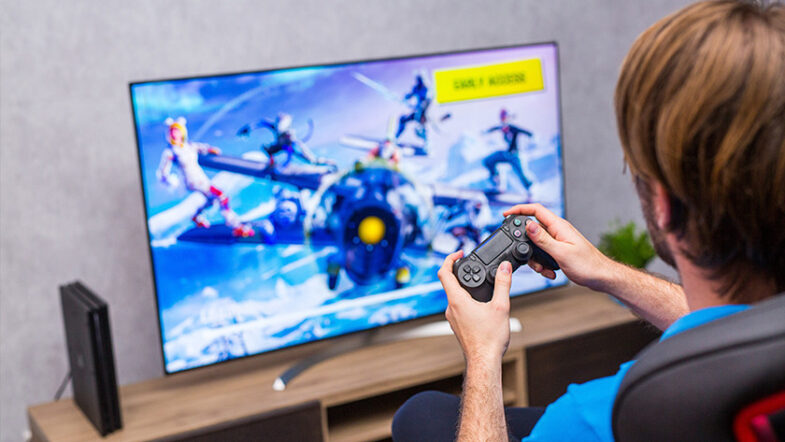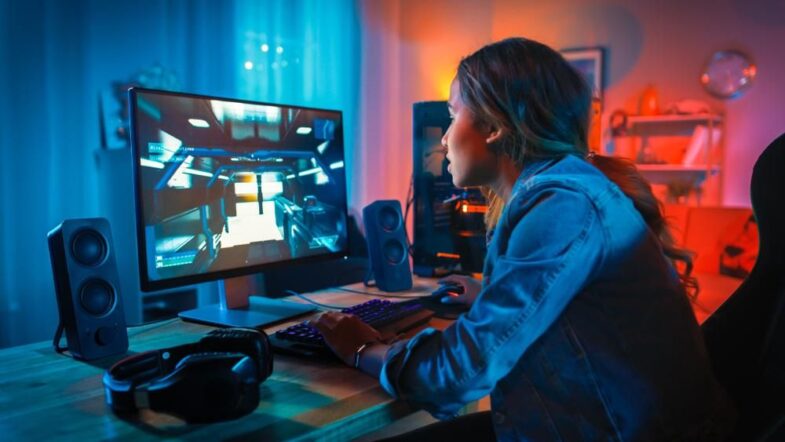Ever feel like your in-game actions are a beat behind? Maybe your character hesitates just a moment before reacting to your commands, or a blurred pixel makes it hard to know your next move. Either way, the delay could cost you the game, leading to frustration or lost competition.
There are generally two reasons for sluggishness on your computer monitor: input lag and response time. While both affect your gaming experience, they’re caused by different issues and unique solutions.
Learn the difference between these slow-response problems and which you should focus on for a smooth gaming experience.
What Is Input Lag?

Source: coolblue.nl
Input lag occurs when there’s a slight delay between your action and the visual response on the screen. It measures the time it takes for your display to register and show an action you perform with your input device, such as a mouse, keyboard, or controller.
One example is when you press a button to make your character jump, but it takes a few extra seconds to see it on the screen. This delay can be affected by your device’s processing speed, the quality of your display, and the efficiency of the software running the application.
For instance, many people wonder if you can use a TV as a computer monitor. While you can, it’s often one of the major reasons for input lag because the screen isn’t built with the same capabilities as a gaming monitor, like fast refresh rates.
The Impact of Input Lag on Gaming

Source: reviewed.usatoday.com
High input lag can negatively affect gaming performance, particularly in fast-paced shooting games like Call of Duty and Valorant or in fighting titles such as Street Fighter and Tekken. This can present itself in several ways:
- Sluggishness. Your character feels unresponsive, preventing precise movements and actions.
- Reduced reaction time. The delay between your action and the visual response impedes your ability to react quickly to in-game events.
- Competitive disadvantage. In competitive multiplayer games, even a few milliseconds of input lag can put you at a disadvantage against players with faster displays.
What Is Response Time?
While input lag focuses on the delay between action and response, response time relates to the display. It refers to the time it takes for an individual pixel on the screen to change color from one shade to another.
Slow response times, typically above 20 milliseconds (ms), can cause a visual effect known as ghosting. This occurs when pixels can’t change color fast enough to keep up with fast-moving objects on the screen, creating a blurry trail or smear behind them. It’s typically due to the slow refresh rate of the display panel.
Ghosting can affect:
- Visual clarity. Blurred visuals make it harder to track moving objects and details on the screen.
- Aiming precision. The smear effect can make it difficult to pinpoint targets accurately, hindering your performance in fast-paced games.
- Immersion. Ghosting breaks immersion in gaming and multimedia experiences, pulling the viewer out of the content’s intended realism or engagement.

Source: Gorodenkoff / Shutterstock.com
What Should I Prioritize?
Both input lag and response time affect gaming performance in different ways. Depending on your configuration, it is possible to have both high input lag and poor response time. The result is a poor gaming experience, with blurry effects, graphical artifacts, and a lack of responsiveness and image clarity.
For instance, in games requiring high precision, such as first-person shooters, it can make you feel slower to react and less accurate. Games with constant, high-speed motion, like racing games and driving simulators, may make it harder to find your braking points or track other drivers.
Ideally, you want a monitor with low input lag and a fast response time. While you may aim for better performance in one area over the other depending on your preferred games, you must ensure a minimum quality baseline. Here’s a quick reference to help you prioritize:
General Gaming
For an enjoyable general gaming experience across different genres, you’ll want to target a response time of 5ms gray-to-gray (GtG) or lower. This pixel response speed will minimize ghosting and blurring behind moving objects and characters, providing a crisp and clear image.
The maximum acceptable input lag for your monitor depends on its refresh rate. Follow these guidelines for the most common refresh rates in gaming PCs and TVs for sale:
- 60 Hz: 16ms or less
- 120 Hz: 8ms or less
- 144 Hz: 7ms or less
- 240 Hz: 4ms or less
If your monitor has a “Game Mode” available, turning it on can reduce input lag by disabling specific effects, such as post-processing or optimizing performance.
Competitive Gaming

Source: thearmoredpatrol.com
If you’re a hardcore competitive gamer looking for every possible advantage, invest in high-end monitors with the lowest input lag and pixel response times.
Competitive gaming often demands high refresh rates, as they let you use high framerates to improve your reaction times and gain an advantage. A low input lag is the other half of the equation — once you have reacted in time, you need the shortest possible delay between your input and your actions on screen. Aim for 7ms or less, but the lower the figure, the better the responsiveness.
A 1ms GtG or lower response time eliminates potential ghosting or blurring during fast motion. Pair those lightning-fast specs with a high 144Hz+ refresh rate, and you’ll get a buttery smooth experience with zero perceptible input lag and pristine motion resolution — crucial for competitive multiplayer games that require split-second reactions and tracking.

Source: Gorodenkoff / Shutterstock.com
Strike the Right Balance
Input lag and response time are critical to gaming performance in different ways. Instead of prioritizing one over the other, a quality gaming PC setup should feature a display that minimizes both as much as possible. Whether you prefer more casual and cinematic experiences or are a hardcore competitive gamer, understanding both factors will benefit you and help you choose the right display device.
